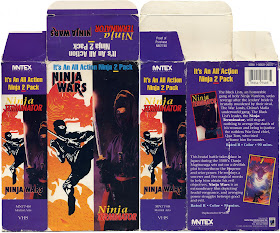
The Hustler
United States - 1961
Director - Robert Rossen
Key Video, 1986, VHS
Run Time - 2 hours, 14 minutes
United States - 1961
Director - Robert Rossen
Key Video, 1986, VHS
Run Time - 2 hours, 14 minutes

Notorious
United States - 1946
Director - Alfred Hitchcock
Key Video, 1988, VHS
Run Time - 1 hour, 43 minutes
United States - 1946
Director - Alfred Hitchcock
Key Video, 1988, VHS
Run Time - 1 hour, 43 minutes
I won't say much about these movies except that both of them are superb. Of course.
Personally of the two I prefer The Hustler because Paul Newman is a brilliant actor particularly at this stage of his life, and because it's subject is far seedier than the high-class world of Notorious. That's not to say Notorious is by any means bad, I just prefer the underbelly.
Really this post is about Key Video, a subsidiary of CBS/Fox. While I don't particularly think that the history of the company is terribly interesting in and of itself, I do find the intentional differentiation of the home video company from the parent studio to be interesting.
In the early days of home video this happened frequently as the middlemen who sprang up to deliver product to retail stores had to basically talk the studios into going along with the whole home video thing in the first place. When the studios realized there were huge profits being made, they bought out these distributors. In the case of CBS/Fox, the distributor was Magnetic Video, basically the midwife to the birth of home video.
What I find interesting about these old Key boxes is their lack of artistic skill. Both boxes, but The Hustler in particular appears to be designed primarily for product recognition more than anything else. The spine in particular, the title is difficult to read superimposed over the stripes and is not aligned in the same place because of the barcode. The Notorious box is much better, oh what a difference two years can make.
























































